Over the past couple of months, construction of the controversial Keystone XL pipeline has faced two legal challenges. One is from a Native American tribe concerned that pipeline workers might spread the coronavirus to their communities. The other is driven, in part, by an inch-long beetle. A colorful scavenger of grasslands and forest understories, the American burying beetle is an endangered species, and on April 15, a federal judge in Montana ruled that the Army Corps of Engineers, in its haste to build the pipeline, had violated the insect’s protected status.
When we think of conservation, we typically think of vertebrates: pandas, tigers, bald eagles. But a growing number of conservationists are turning their attention to protecting insects, as well. A recent study that evaluated data going as far back as the early 1900s found that 31 percent of surveyed insect species may be threatened with extinction. The global review of thousands of species, encompassing ten major insect groups, is just one of many suggesting a potential large-scale decline of insects, prompting conservationists to act.
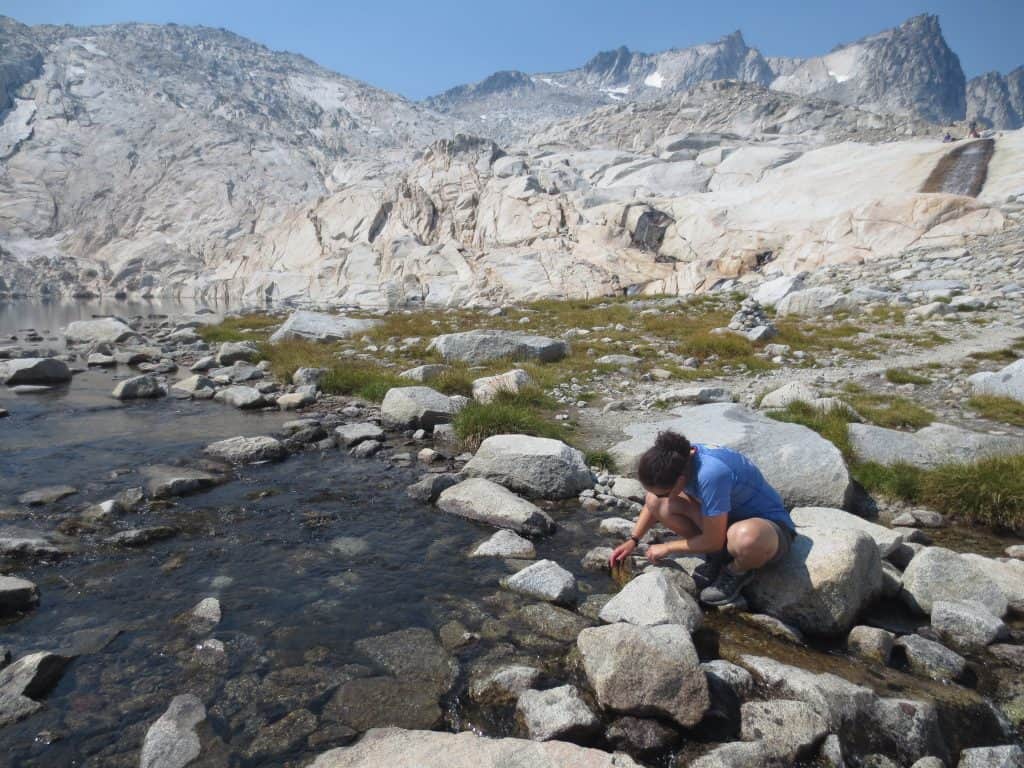
While the barbecuing public may see insects mainly as nuisances to the potato salad, these tiny multitudes play a critical role in maintaining sustainable ecosystems. When insects eat plants and are, in turn, consumed by birds or mammals, they broadcast the energy from those plants up to the highest reaches of the food chain. Moreover, without the help of pollinators, 80 percent of flowering plants wouldn’t be able to reproduce. Closing the circle, insect scavengers return nutrients to the soil, where they’re taken up by plants.
Insects are such key players in this cycle that scientists are focusing on measures to ensure their survival, such as habitat restoration, protective policies and conservation strategies. Butterfly conservationist Dr. Cheryl Schultz has seen how these actions can bring insects back from the brink, like Oregon’s Fender’s blue butterfly, which numbered fewer than 1,500 in the 1990s. “Now, the numbers are fluctuating as high as 25,000 to 30,000 across their ranges,” says Schultz. “We’ve done that for Fender’s blue through a combination of focused science and people working together to use that science.”
The race to save a beetle
Under the light of a spring moon, a black-and-orange beetle dashes through the tall, gold-tinted grasses of the Nebraska prairie and comes across a towering quail corpse. He climbs the body and distributes chemical pheromones in hopes of attracting a partner. Soon one arrives, and the pair plow through the soft soil, remove the bird’s feathers and drag it into the ground.
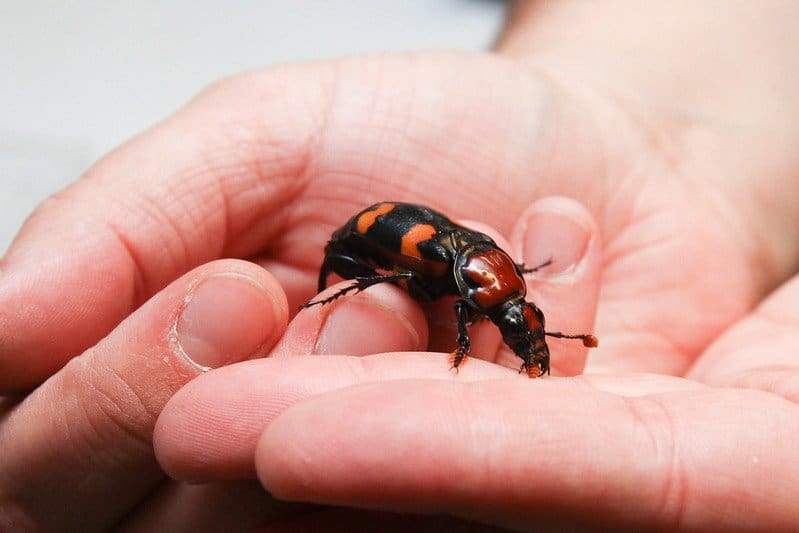
The couple mates and the female lays eggs in a small chamber above the carcass. Later, the parents regurgitate parts of this carcass into the mouths of their offspring, co-parenting the little ones — a rare dynamic among non-colonial insects — as they transform from pupa into adult beetles, free to fly around the nighttime prairie.
One night in June, 10 to 20 other couples stumbled upon something different — a dead rat in plastic bucket, placed there by a team of conservationists from Ohio. “Once we collect the beetles, we drive 16 hours straight from Nebraska to Ohio so we know they won’t overheat,” says one of the conservationists, Stephen Spear, Ph.D. “And then we start breeding them.”
Spear is the director of wildlife ecology at The Wilds, a nature reserve in Muskingum County, Ohio, a state where the American burying beetle was last seen in 1974. The beetle used to be abundant across 35 states and three Canadian provinces, but it is now at risk of extinction, with only three stable populations across four states. Its decline can be attributed to habitat destruction, competition from mammalian scavengers and perhaps the extinction of suitable carrion like the passenger pigeon, which was ideally sized for the beetle’s reproduction.
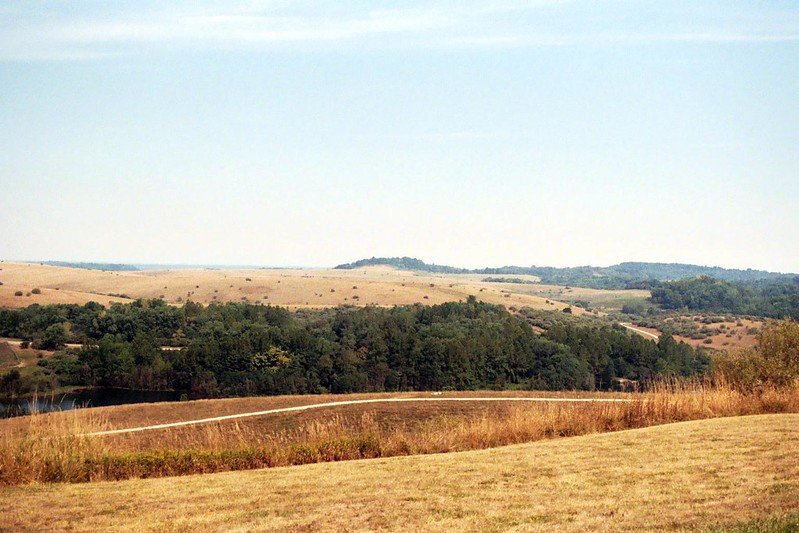
After capturing the beetles from Nebraska, Spear and his team place them in a bucket of soil, complete with a buried rat carcass. Two weeks after the couple settles, the staff checks to ensure that they’ve produced larvae, excavating the top of the soil and covering it with a black cloth, which allows them to observe the beetle’s mesmerizing lifecycle.
“It’s really fascinating to watch because the adults are constantly moving and tending to the larva,” Spear says. “It’s not something you think about insects, that they would have that kind of dedicated parental care.”
Weighed down by negative news?
Our smart, bright, weekly newsletter is the uplift you’ve been looking for.When these larvae emerge, the team at The Wilds cares for them throughout the winter. Come breeding season in the spring, they introduce each beetle to a mate at another breeding facility to increase genetic diversity. Next summer, the grandchildren of the initial couples from the prairie will be transported to The Wilds’s forest habitat. Using a putting green hole maker, the staff, along with summer campers and volunteers, create a small pit, lower a dead rat inside and cover a beetle couple inside the home.
This end goal of this meticulous process is a self-sustaining population of American burying beetles within the 10,000 acre reserve. It is but one small effort of many to save a threatened insect, up to and including using one of the most powerful conservation laws the U.S. has.
Six legs, one law
The Endangered Species Act (ESA) has been a conservation triumph. Since its implementation in 1973, 99 percent of the wildlife under its protection have avoided extinction. From gray wolves to bald eagles to crocodiles, dramatic recoveries of majestic megafauna have made the ESA the most recognized conservation law in America.
But the ESA has also been used to protect smaller creatures, like insects. The American burying beetle was designated an endangered species in 1989, a status that Spear says has been integral to securing funding and research for breeding and reintroduction programs. “I think we’re pretty confident that without it being listed, we certainly wouldn’t be doing this project here,” he says.
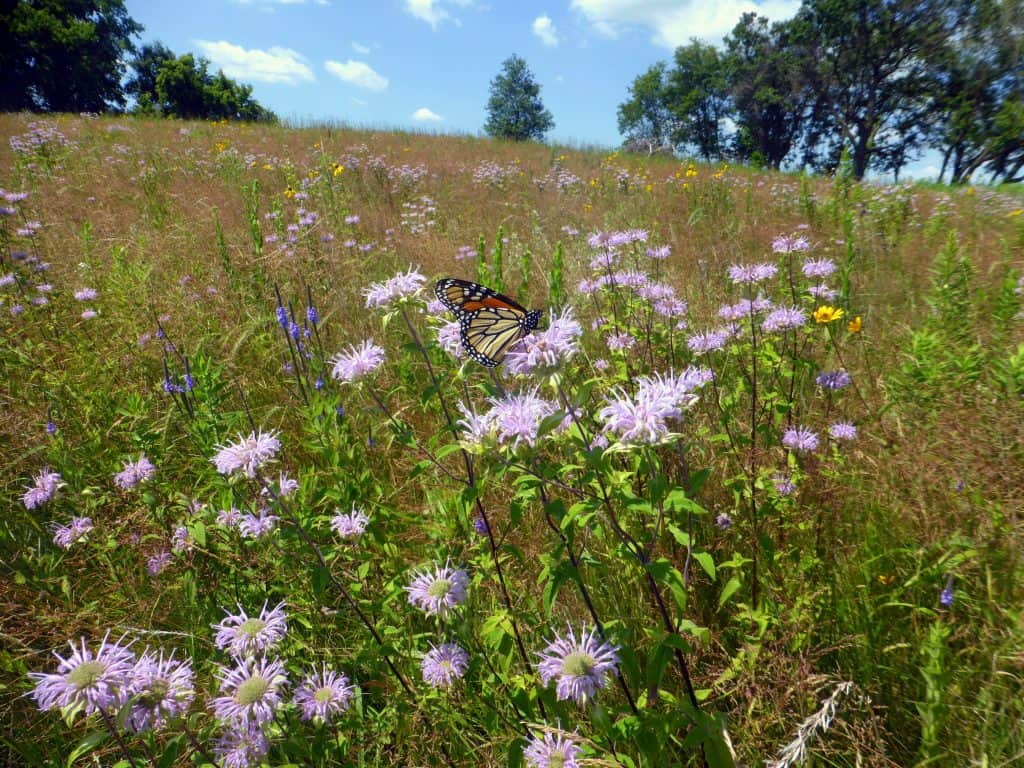
Similarly, Dr. Schultz believes that the ESA has been key to the Fender’s blue butterfly’s survival, and would like to see more species listed, specifically the monarch butterfly. “There are many things that can and will happen once a species becomes formally protected,” says Schultz, “especially in terms of how federal agencies need to manage habitat on public land.”
Designating a species as endangered or threatened requires data, however. That’s where the Xerces Society, an insect conservation group, comes in. When the organization finds data showing a possible extinction risk to an insect, it shares it with federal authorities via an ESA protection petition, says Executive Director Scott Black.
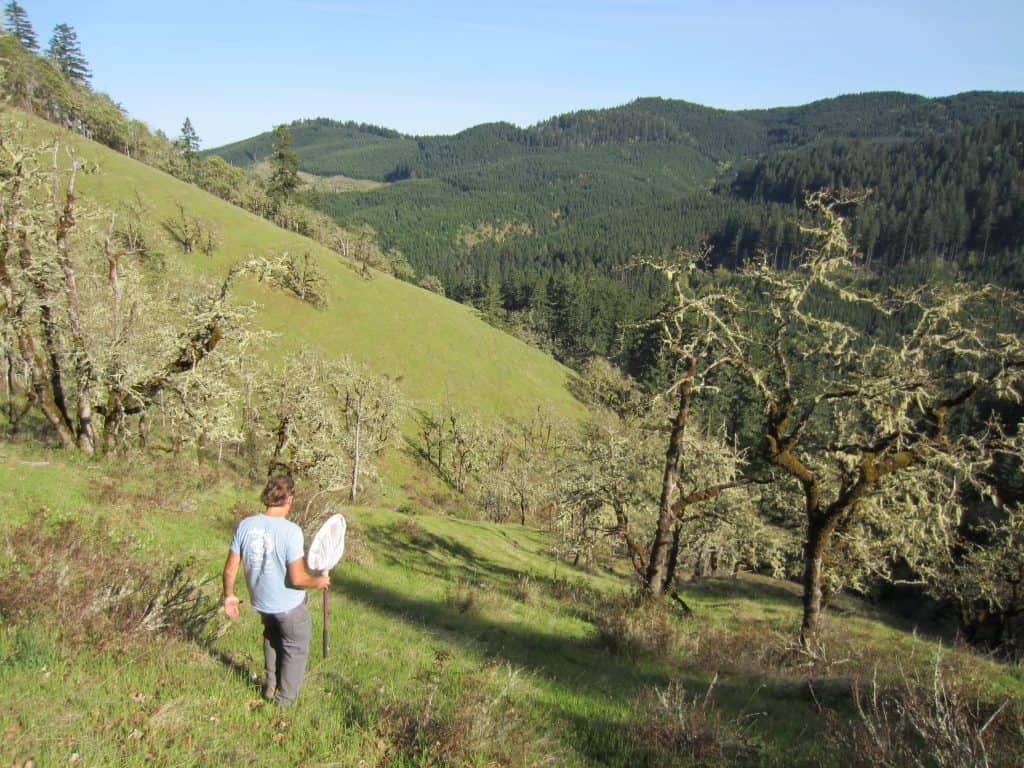
But for all its efforts to protect insects, the Xerces Society’s ultimate goal is to keep them off the endangered species list in the first place. In 2002, the organization petitioned to list the mardon skipper butterfly as endangered. Rather than waiting for the species to become listed, Xerces began working immediately to study the butterfly’s lifecycle. This gave them the information they needed to collaborate with local forestry services to protect the species. Ten years later, the butterfly’s application for ESA protection was rejected — it had already started to recover.
Hope through habitat conservation
“The good news is that pollinators respond very well to conservation,” says Black. “Even if you put habitat in small places and protect it from toxins, you can increase the diversity of the pollinators around you.”
Black grew up catching fireflies by night and collecting butterflies by day in the meadow near his childhood home in Nebraska. When he returned years later, he noticed something had changed. “Instead of seeing hundreds of monarchs as I did in my youth, I would see dozens,” he recalls. “And around street lights where I used to catch big beetles when I was kid in the middle of summer, you didn’t see nearly as many anymore.”

In 2004, Black started talking to scientists about his observations. Two years later, insect declines became an unexpected media sensation, thanks to the beloved honeybee. In fall of 2006, beekeepers across America reported an epidemic of large-scale honeybee colony die-offs. The news struck a chord, because the bee’s industrious honey-making habits were so familiar to the public.
The USDA was alarmed enough to launch a large-scale investigation into the causes and identified multiple culprits, including the parasitic varroa mite, bee viruses and insecticide exposure. The destruction of wildflower habitats was seen as a common link exacerbating all of these threats. According to a Colorado State University study, poor nutrition is a significant factor in colony collapse, damaging bees’ immune systems and reducing their likelihood of surviving to adulthood. This poor nutrition, the study suggests, stems from habitat loss. Bees get their nourishment from nectar, and in many places, the plants that provide this nectar have been developed over.
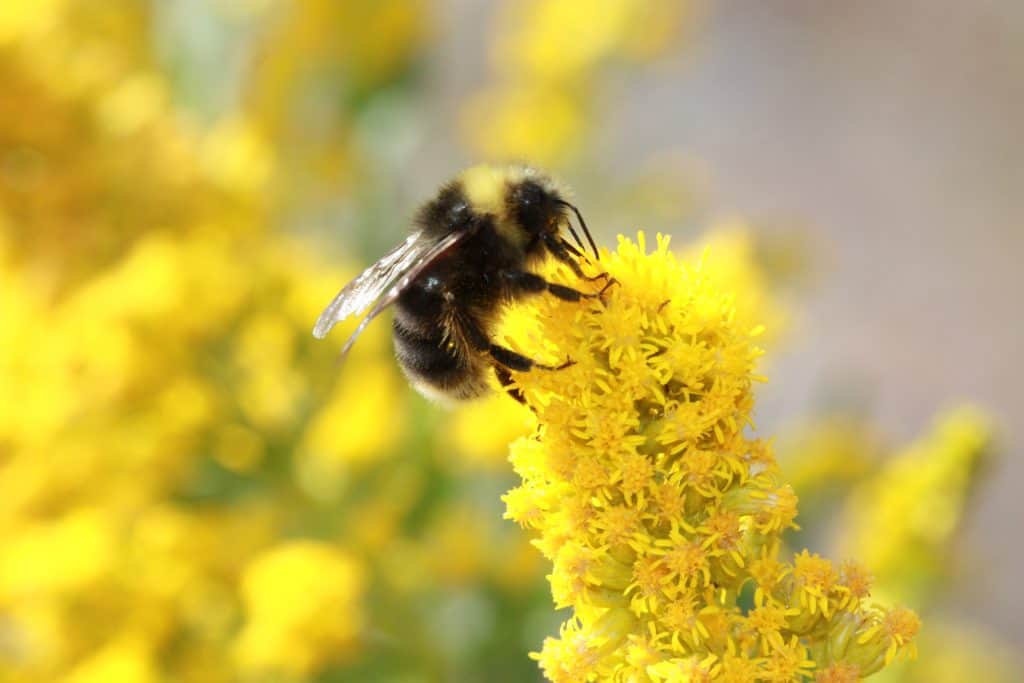
The Xerces Society has been at the forefront of the movement to protect these nectar-rich areas, working with organizations across the country to restore more than 2.5 million acres of habitat for both rare and common insects. This includes working alongside farmers to help pollinators find a balanced meal — even though many farms contain crops containing pollen and nectar, they are often all the same type of crop, giving the insects only one food source. Just like humans, pollinators that only consume one type of nectar will lack key nutrients, so the Xerces Society has helped farmers establish areas full of diverse, native plants.
A successful example of this can be found on Harris Family Farm, a large almond farm in California’s Central Valley, where over six miles of native shrubs have been planted along the perimeter. Projects like these benefit farmers by attracting domestic and wild pollinators that help their crops reproduce, as well as attracting predatory wasps that devour crop pests.
Even major food conglomerates recognize that insects are key to their products’ success. General Mills has partnered with the Xerces Society to encourage farmers who grow oats and other crops to build similar habitats. “Pollinator loss is an issue that really resonates with food companies and farmers,” says Black. “So one of our biggest partners is General Mills, which is implementing really large-scale habitat restoration to make their supply chain better for pollinators.”
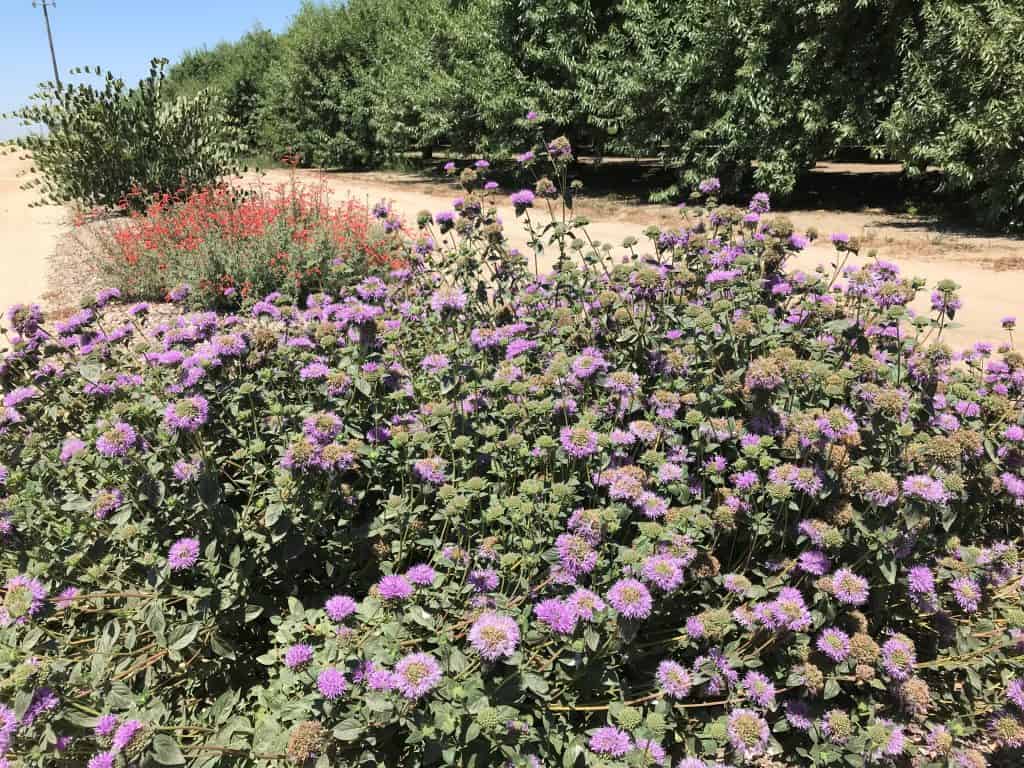
Black says the Xerces Society has reached out to 120,000 farmers and land managers to educate them on how to better protect the pollinators they rely on. In June of 2017, the organization created the first non-governmental certificate for growers who have shown a dedication to pollinator conservation, called Bee Better Certified.
Signs of progress
In May and June of last year, five American burying beetles fell into similar carrion traps that their great-grandparents, or perhaps even more distant descendants, had stumbled upon in the Nebraska prairie. This time, the beetles were caught searching for a carcass in the forested habitat of The Wilds.
According to Spear, these beetles were the descendants of those his team had released on Wild’s property, meaning the beetles they covered with dirt over the rat corpse had successfully reproduced. It isn’t clear if the beetles were descended from those they released last summer or a previous summer. But one thing is clear: the beetles had survived Ohio’s cold winter.
The discovery was a relief. In 2017, the team caught 21 beetles, while 2018 saw higher catches at 55. However, none were captured between the end of winter and the time before annual releases — until 2019.
Spear is looking forward to this year’s annual releases, set to take place June 18 and July 2, even though his team won’t be helped by volunteers, due to the pandemic. Recently, on June 3, The Wild’s technician Andrea Malek discovered the sixth overwintered beetle, only this time, it was a beetle they had released last summer, rather than the progeny of one. Spear discovered this when he looked at the beetle’s marking, used to identify any beetle they release. “That beetle has been through an entire year,” he said. “And that’s about the maximum lifespan of these beetles… It’s been through an entire summer, an entire winter and it’s still moving around.” A small victory, indeed.









